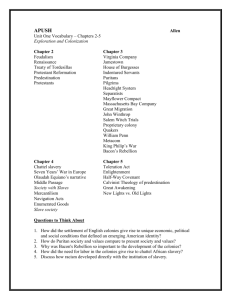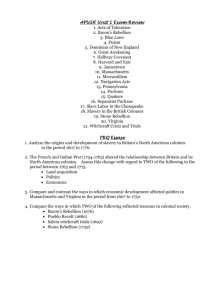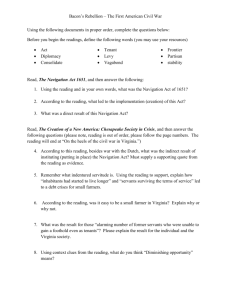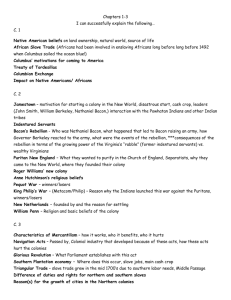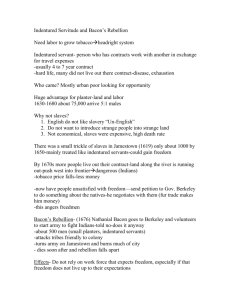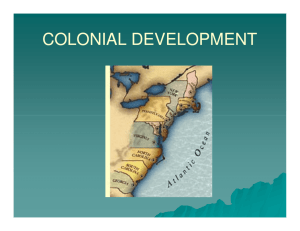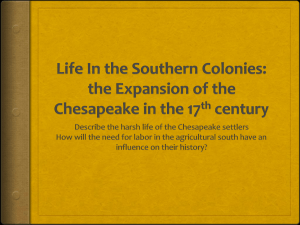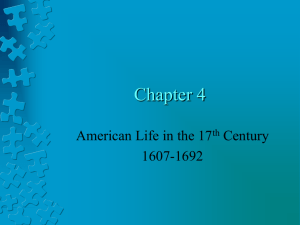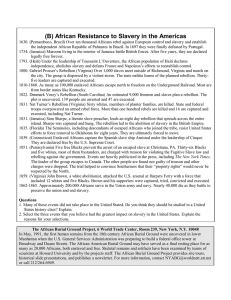Chapter 3: Colonial Ways of Life
advertisement
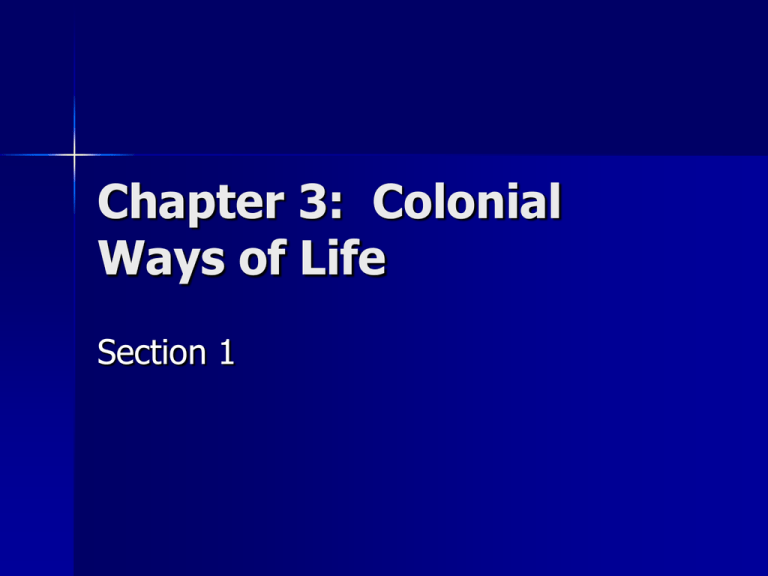
Chapter 3: Colonial Ways of Life Section 1 The Southern Economy The southern economy was based on commercial agriculture. The main cash crop was tobacco while rice and indigo was also grown. Large plantations were an effect of the possible riches of growing cash crops. The geography of Virginia was perfect for growing tobacco. The Southern Economy Lack of laborers was a key problem for farmers in the early years. Indentured servantry was a system used to help with the labor force. Southern Society Two distinct social groups emerged in the South. The wealthy landowner enjoyed enormous economic and political influence. Many of the wealthy copied the fashions and lifestyle of England’s upper class. Due to this economic success the Southern Society The smaller, poor farmers were a much larger group of people who lived tough lives. They had to concentrate their farming on food to feed their families. Many of the poor farmers died due to disease, hunger, or weather. Bacon’s Rebellion Due to taxes and voting rights the poor were fed up. The wealthy in Virginia didn’t want the poor to take Native American lands fearing war. The poor took matters into their own hands and started battling the Native Americans. Bacon’s Rebellion Nathanial Bacon joined the poor because of the Native American threat. Bacon then lead his troops into Jamestown to demand more reform He died and the rebellion ended. Due to the rebellion Virginia took more land to keep the poor happy and slavery increased to keep servants out. Slavery in the Colonies Enslaved Africans were put into ships on the West African Coast and sent to the Americas on the Middle Passage. The quarters on the ship were cramp and inhumane. In the beginning many Africans were treated like indentured servants gaining freedom by adopting Christianity. Slavery in the Colonies By 1705 laws were set up to regulated and defined slavery. Due to these laws the slaves lost most rights and became nothing more than property of their owners.
